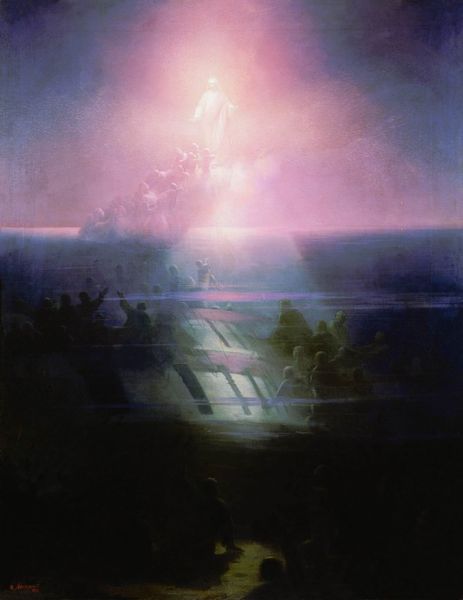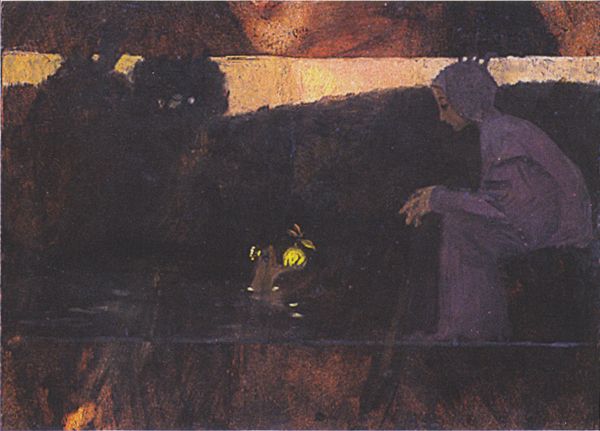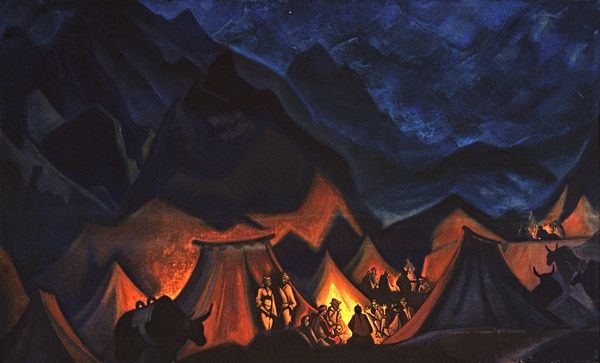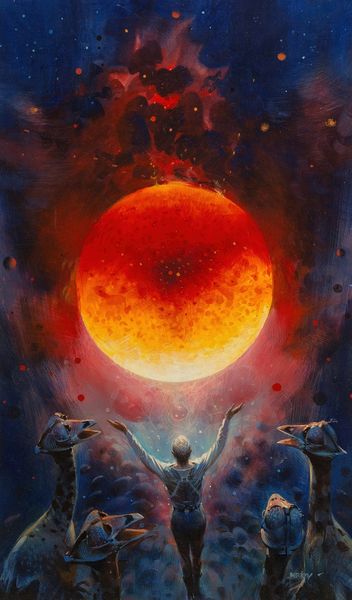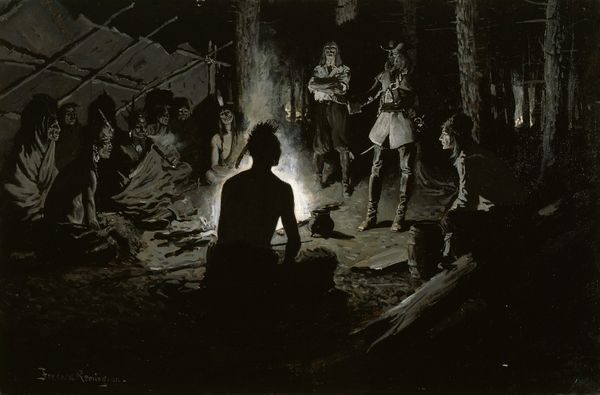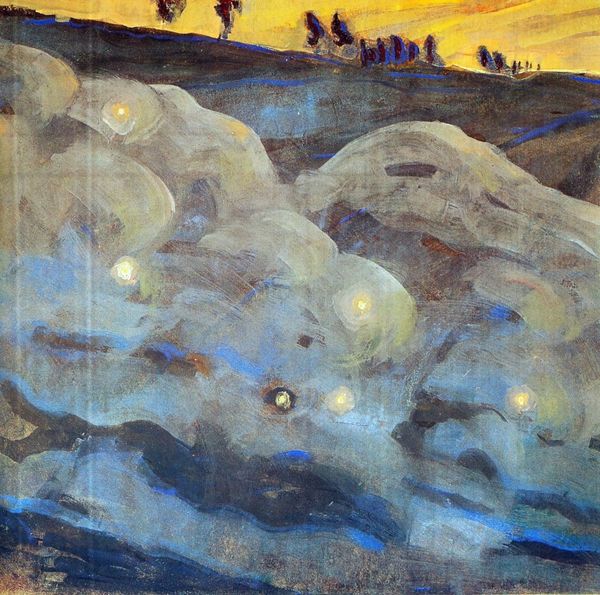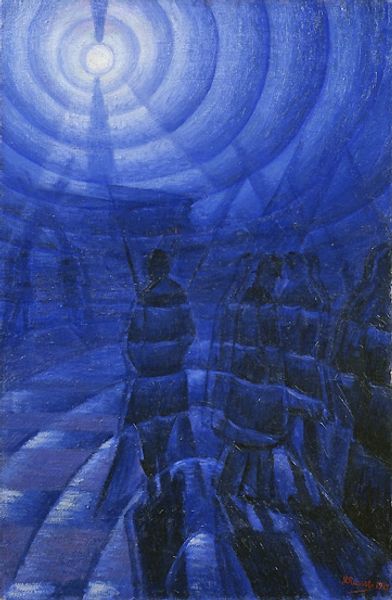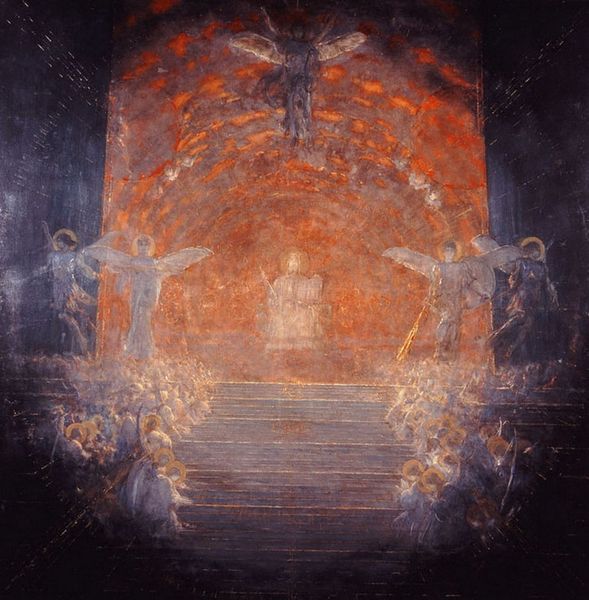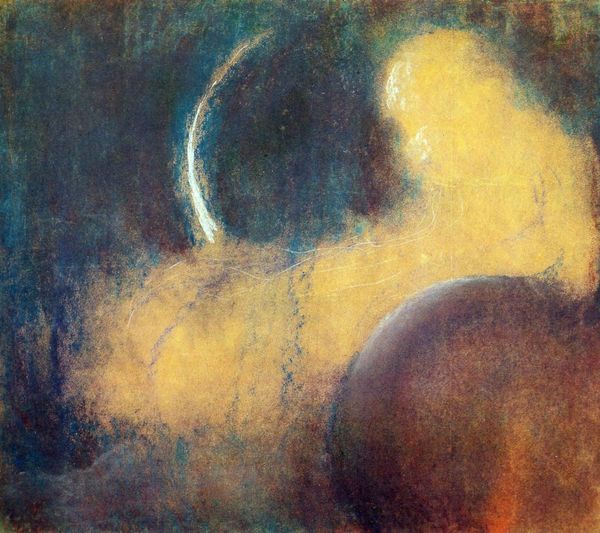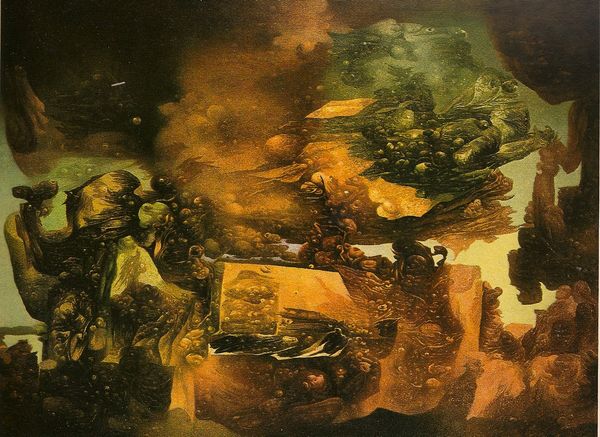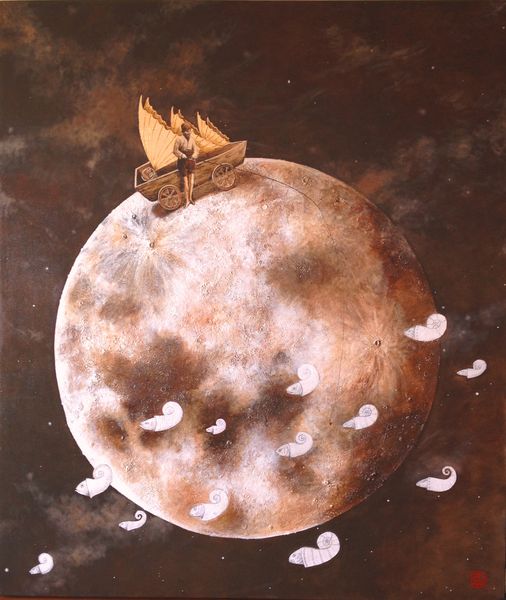
acrylic-paint
#
acrylic
#
fantasy art
#
landscape
#
fantasy-art
#
acrylic-paint
#
neo expressionist
#
neo-expressionism
#
geometric
Copyright: CC BY-SA
Curator: It strikes me as something ancient, almost primordial—dark and a bit unsettling. Editor: Then let’s shed some light. This is Hanno Karlhuber's "The Hermit's Friend" from 1987, rendered in acrylic paint. I'm curious about your sense of unease. Curator: Well, the subject matter: stacked rocks lit by an ethereal glow in an otherwise desolate landscape. There's an implied narrative of isolation that feels potent in our hyper-connected world. Editor: True. Karlhuber’s engagement with neo-expressionism is evident, particularly in the textures. I see layers, the way the paint’s been applied, as very deliberate, emulating the weight and form of these large boulders. The means of its construction reflecting the weight of its subject. Curator: Precisely. It transcends simple representation. It speaks to the emotional weight of being, perhaps commenting on ecological devastation through the lone figure in contrast with their natural surroundings? Is that "friend" a metaphor? Is nature a true solace, or a stark reminder of human impact? Editor: Interesting. For me, the question becomes one of how our interpretation is shaped through those heavy, carefully applied strokes of paint. Consider acrylic's emergence and its implications. Here, in Karlhuber’s work, we're not merely viewing a landscape; we are experiencing a mediation between mass production and manual artistry. The work challenges any binary between nature and the artificial. Curator: So you are seeing Karlhuber intentionally highlighting his own process? Editor: Yes, foregrounding process to question nature's “naturalness.” His method becomes as relevant as the landscape depicted. That light is both alluring and unnatural in tone, illuminating only hard edges. Curator: It pulls us into questioning those spaces of tension between solitude, our relationship to nature, and whether or not solace is truly available. Editor: Indeed, and by understanding its construction, and its place within contemporary art and culture, it opens broader questions of both being and making, and what is “natural”.
Comments
No comments
Be the first to comment and join the conversation on the ultimate creative platform.
